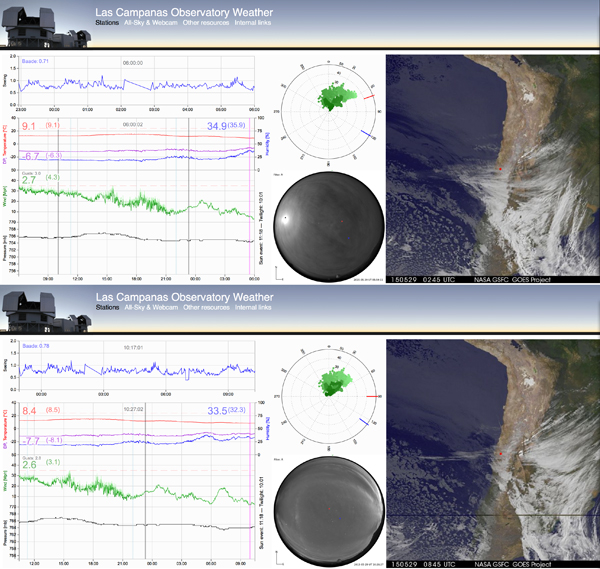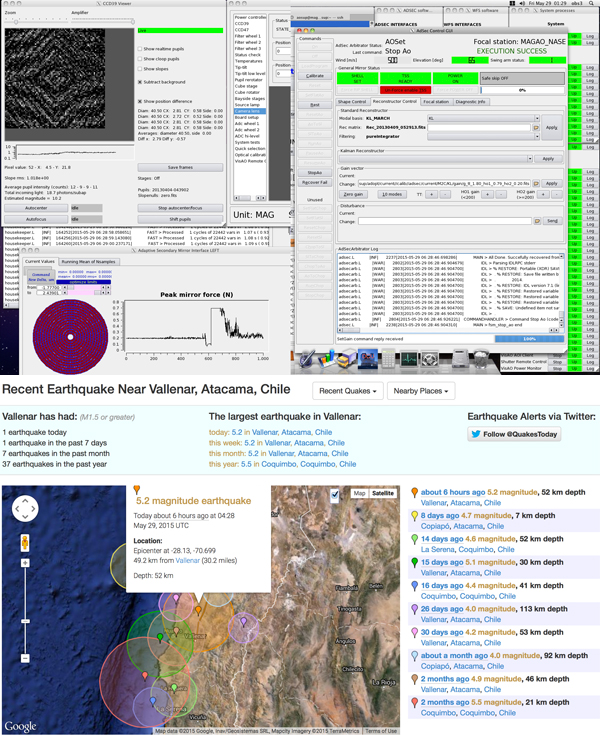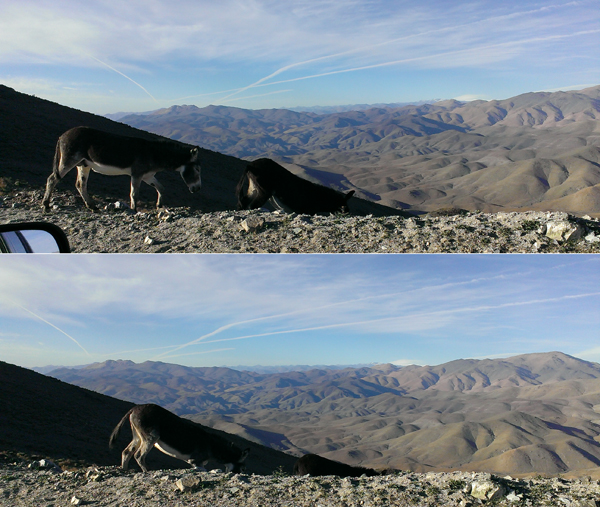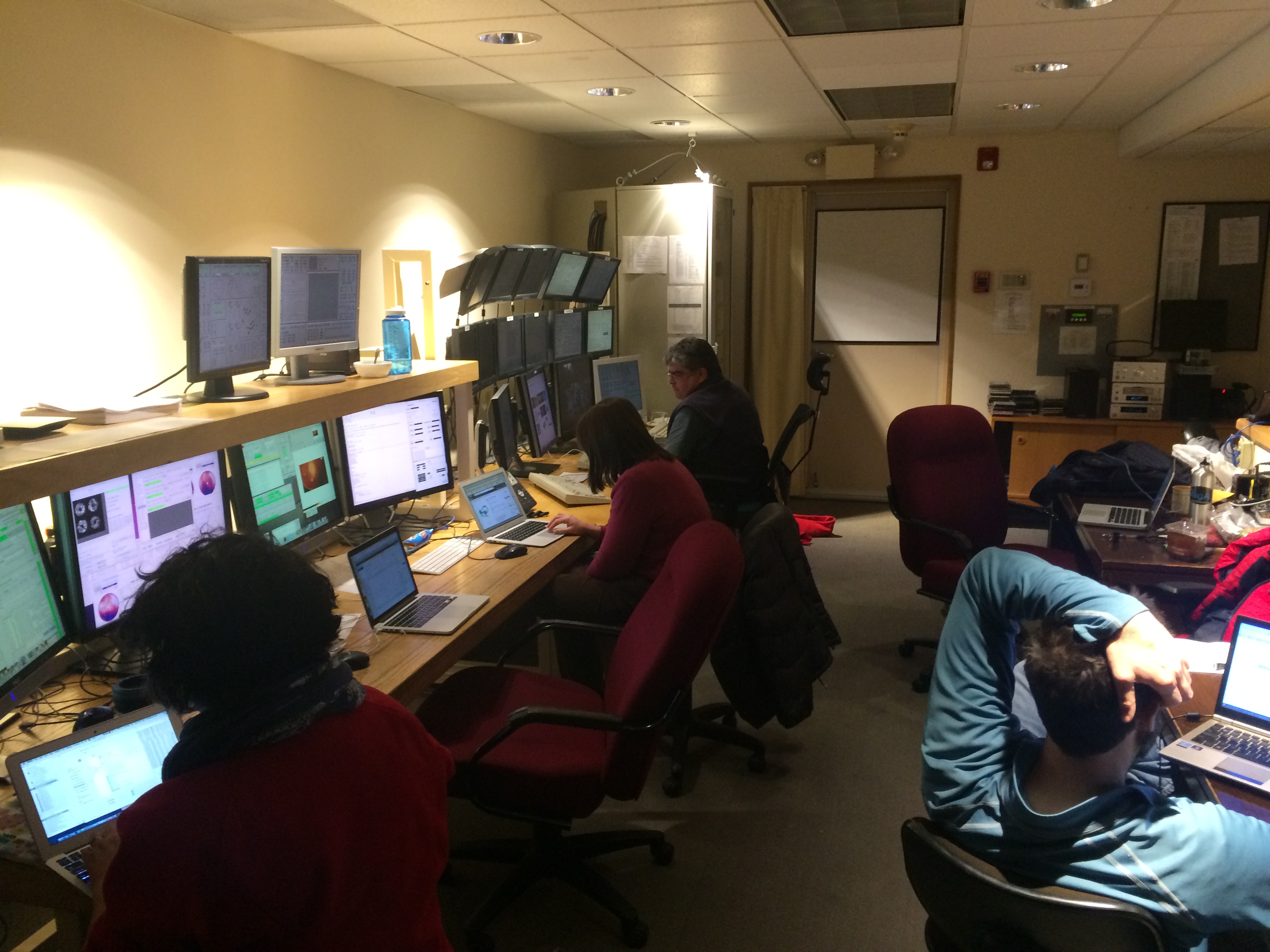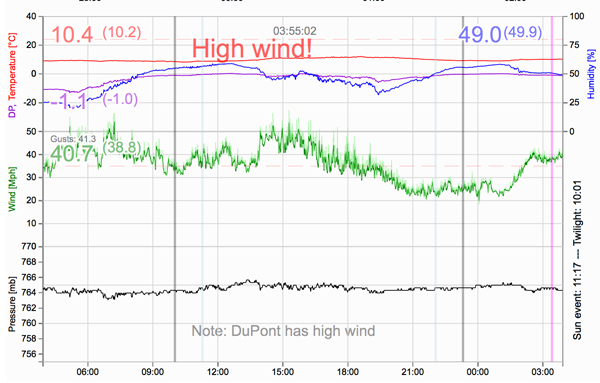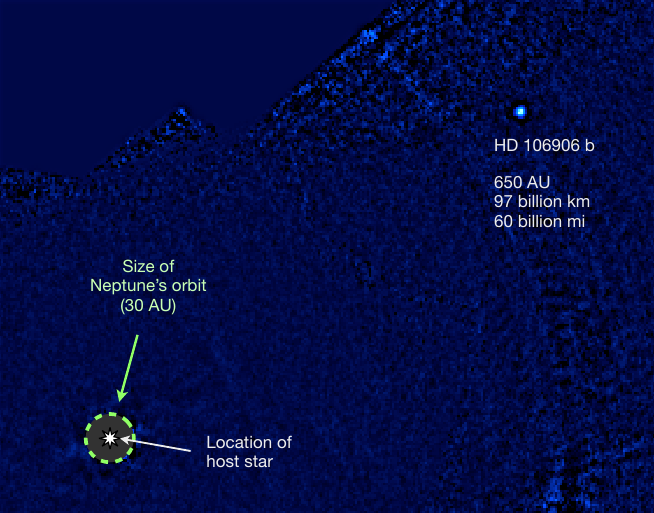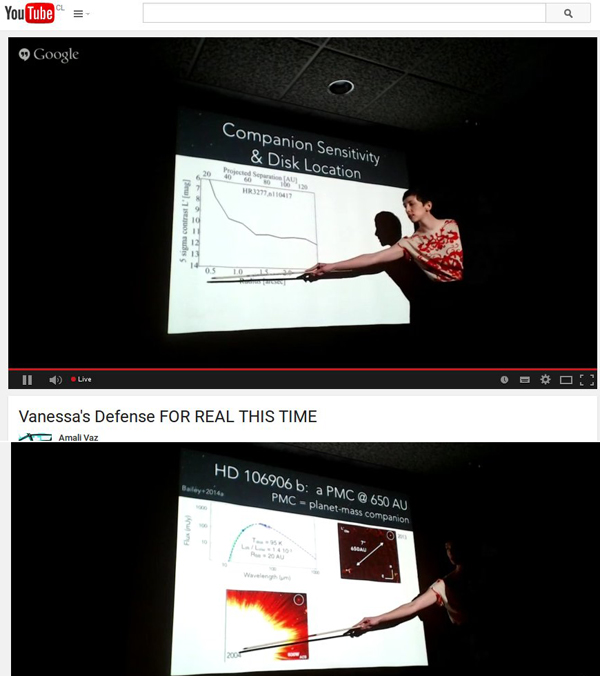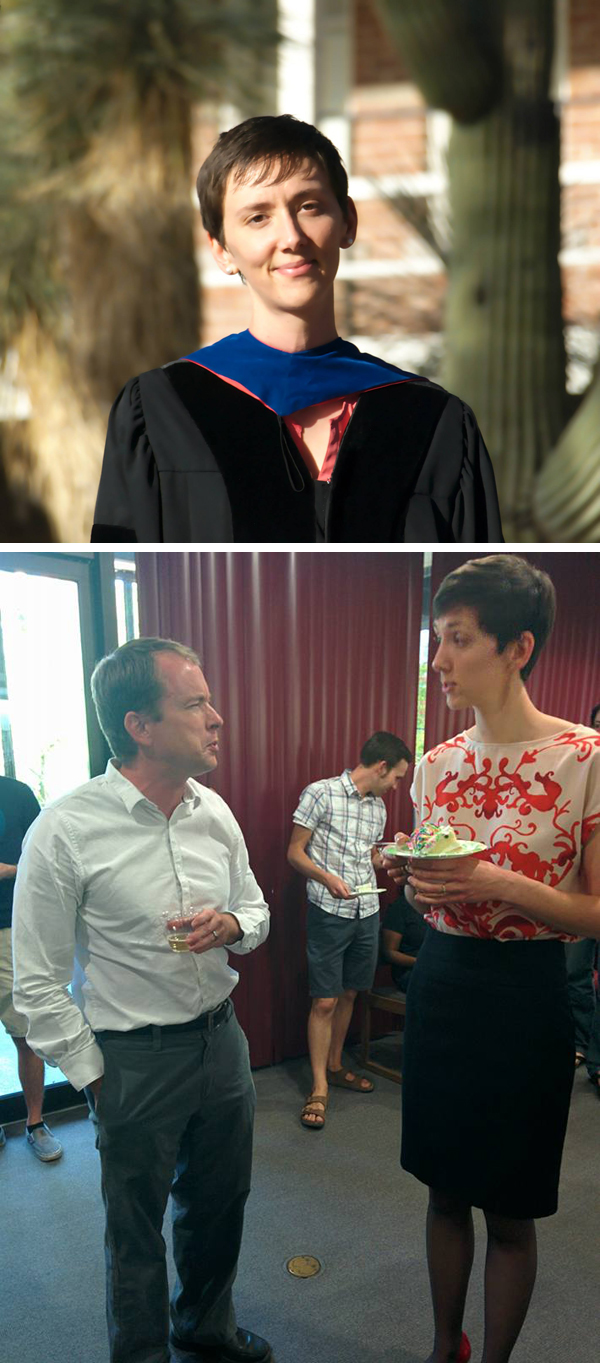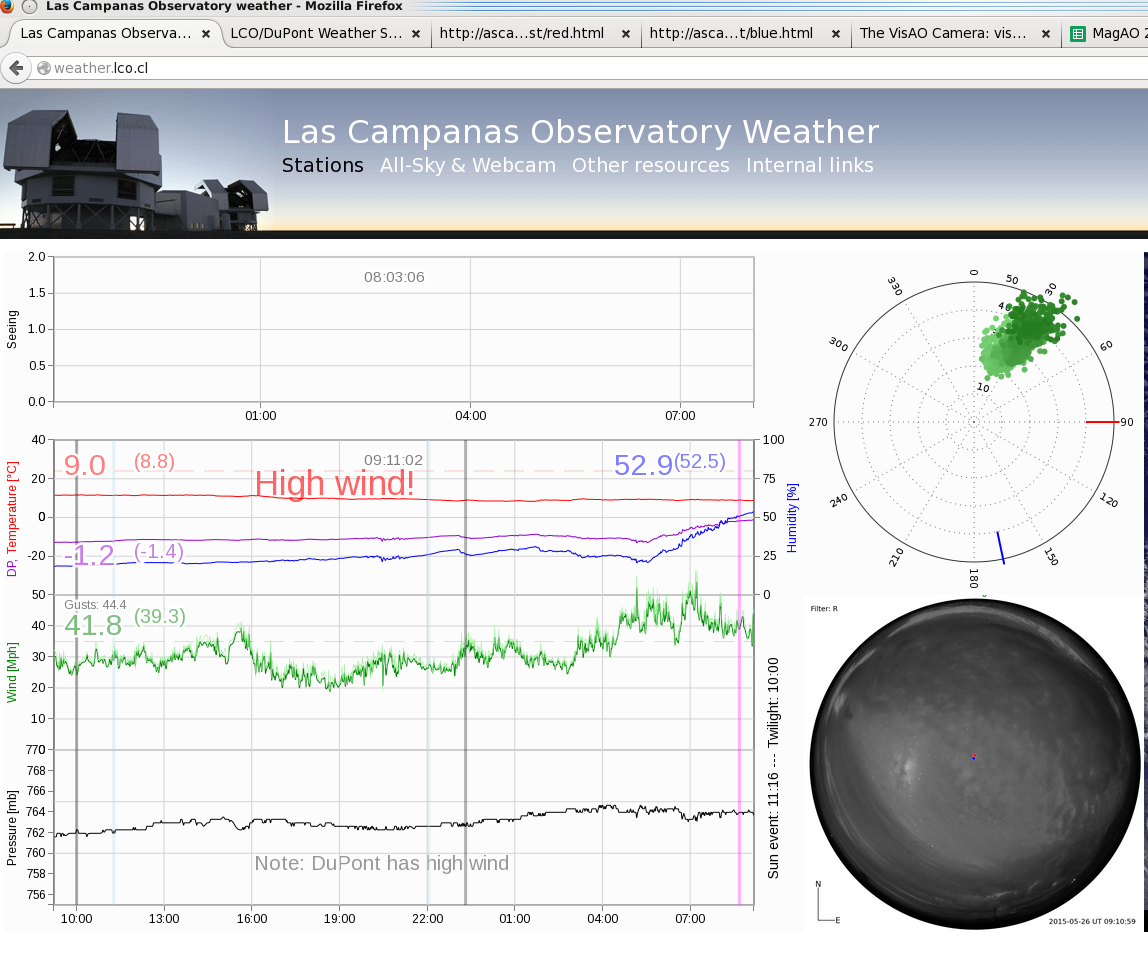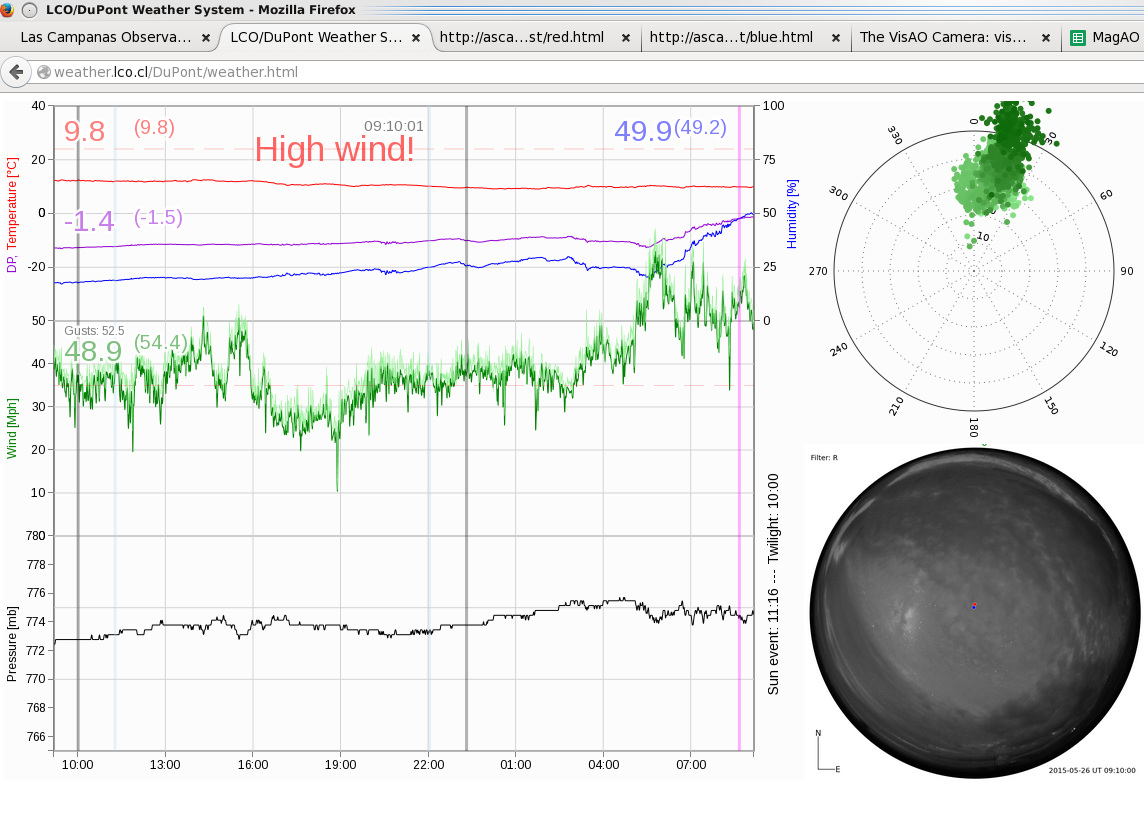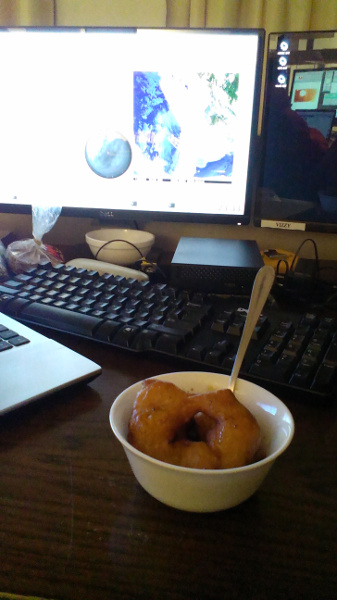For the third day in a row, the internet connection is spotty to nonexistent. I was thinking about the early 90s, when I was a graduate student, and my advisor, Gerry Neugebauer, was the director of Palomar Observatory. He wasn’t keen on getting internet to the dome because, as I recall, he thought astronomers would waste time on their email and pay
insufficient attention to their observing and that they would come to the mountain unprepared. I think both things do happen, but that generally the benefits of connectivity are enormously high. How else could we blog?
Seriously, though, while we could come prepared with any object we might possibly want to observe, instead we can find the coordinates of objects and their finding charts when we want/need them. While we could come prepared with a library of papers on all those targets, instead we can download them when we need them. When technical difficulties arise, it’s essential to contact the experts who aren’t on the mountain. And being all the way in Chile is made much nicer by being able to call home easily with VOIP.
As if the internet weren’t already crisis enough, we’ve had technical difficulties with the AO stages last night and tonight (see last night’s blog post and my above comment about contacting experts who aren’t on the mountain and who are, in this case, in Italy).
You might we wondering, am I telling you absolutely everything?
Well not exactly. If that weren’t two crises enough, Katie and Jared are almost out of their Starbucks instant coffee. Panic could ensue before they’re resupplied (see 39 seconds in):
You can tell that’s an old movie because of all the leg room the passengers had. American Airlines executives today would be incredulous at how they could fly such empty planes; it’d be like the incredulity young astronomers show about how we could live without internet at the telescope.
On a happy note, the wind is low, and the clouds have moved off just north of us:

Since the winds are in our favor, I would post some wind music from Wind (I don’t think it’s ever been covered), but we don’t have internet access to YouTube tonight. Or email. But we are doing infrared astronomy and weirdly the connections to astronomical databases are working. Gerry, here’s a toast to your memory.
Edit: I’m back to post the “Wind song” from Wind:
Post Edit by the Blog Administrators to comply with The 2015A Blog Rules:
